Hyunjung Park
HyperCLOVA X Technical Report
Apr 13, 2024Abstract:We introduce HyperCLOVA X, a family of large language models (LLMs) tailored to the Korean language and culture, along with competitive capabilities in English, math, and coding. HyperCLOVA X was trained on a balanced mix of Korean, English, and code data, followed by instruction-tuning with high-quality human-annotated datasets while abiding by strict safety guidelines reflecting our commitment to responsible AI. The model is evaluated across various benchmarks, including comprehensive reasoning, knowledge, commonsense, factuality, coding, math, chatting, instruction-following, and harmlessness, in both Korean and English. HyperCLOVA X exhibits strong reasoning capabilities in Korean backed by a deep understanding of the language and cultural nuances. Further analysis of the inherent bilingual nature and its extension to multilingualism highlights the model's cross-lingual proficiency and strong generalization ability to untargeted languages, including machine translation between several language pairs and cross-lingual inference tasks. We believe that HyperCLOVA X can provide helpful guidance for regions or countries in developing their sovereign LLMs.
K-FACE: A Large-Scale KIST Face Database in Consideration with Unconstrained Environments
Mar 03, 2021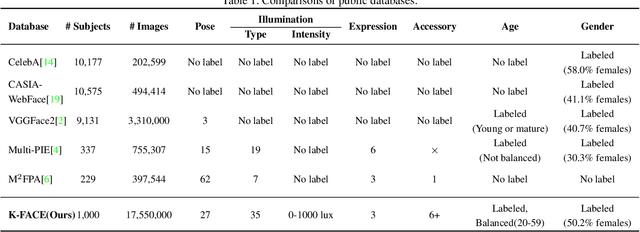
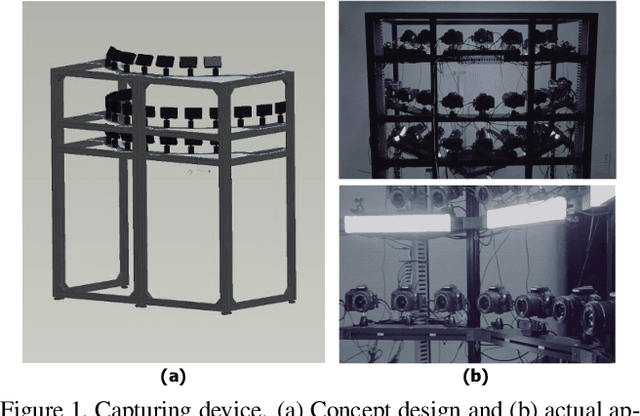
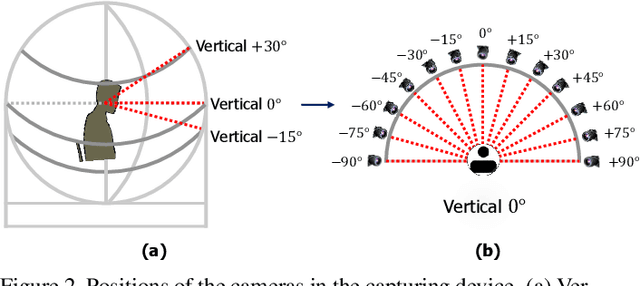
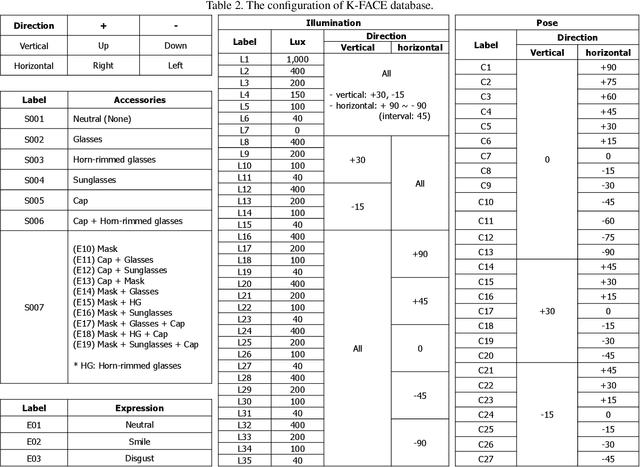
Abstract:In this paper, we introduce a new large-scale face database from KIST, denoted as K-FACE, and describe a novel capturing device specifically designed to obtain the data. The K-FACE database contains more than 1 million high-quality images of 1,000 subjects selected by considering the ratio of gender and age groups. It includes a variety of attributes, including 27 poses, 35 lighting conditions, three expressions, and occlusions by the combination of five types of accessories. As the K-FACE database is systematically constructed through a hemispherical capturing system with elaborate lighting control and multiple cameras, it is possible to accurately analyze the effects of factors that cause performance degradation, such as poses, lighting changes, and accessories. We consider not only the balance of external environmental factors, such as pose and lighting, but also the balance of personal characteristics such as gender and age group. The gender ratio is the same, while the age groups of subjects are uniformly distributed from the 20s to 50s for both genders. The K-FACE database can be extensively utilized in various vision tasks, such as face recognition, face frontalization, illumination normalization, face age estimation, and three-dimensional face model generation. We expect systematic diversity and uniformity of the K-FACE database to promote these research fields.
CareCall: a Call-Based Active Monitoring Dialog Agent for Managing COVID-19 Pandemic
Jul 06, 2020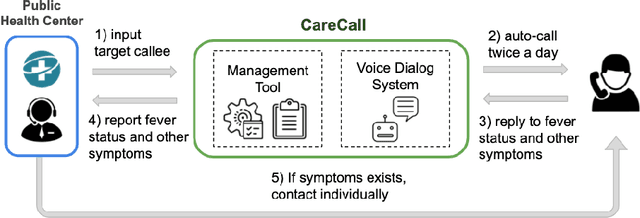

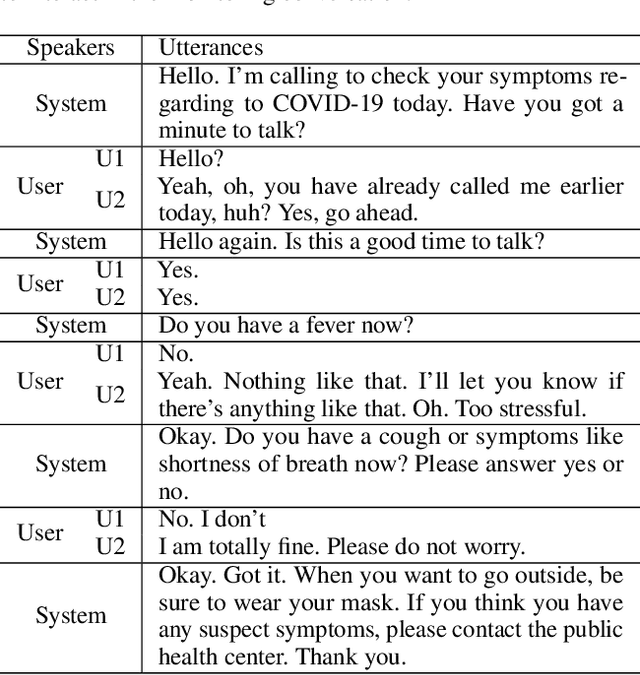
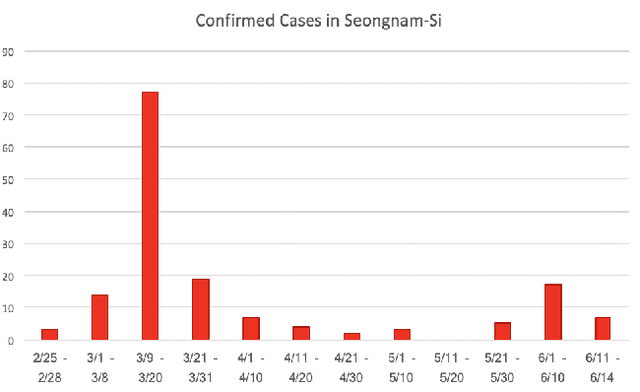
Abstract:Tracking suspected cases of COVID-19 is crucial to suppressing the spread of COVID-19 pandemic. Active monitoring and proactive inspection are indispensable to mitigate COVID-19 spread, though these require considerable social and economic expense. To address this issue, we introduce CareCall, a call-based dialog agent which is deployed for active monitoring in Korea and Japan. We describe our system with a case study with statistics to show how the system works. Finally, we discuss a simple idea which uses CareCall to support proactive inspection.
 Add to Chrome
Add to Chrome Add to Firefox
Add to Firefox Add to Edge
Add to Edge